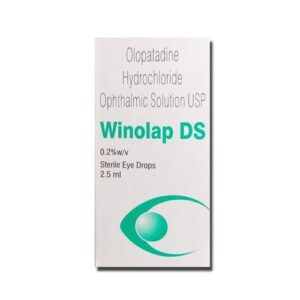Free Classifieds at AUNetAds.com - View Item Content by ID 2315472

AUNetAds > Health & Beauty > Health Services > Item ID 2315472
Item ID 2315472 in Category: Health & Beauty - Health Services
Cannot view this item. It could be pending, expired or deleted.
Below item is randomly selected from the same category and may have similar content.
Are Eye Drops Safe in 2025? What Recent Recalls Mean for You | |
Eye drop recalls grabbed headlines in 2024–2025. People are worried. That makes sense. Eyes are fragile. Anything that touches them should be clean and safe. In this post I’ll explain what happened. I’ll point to trusted sources (FDA, NHS/MHRA, NIH). I’ll also show simple steps you can take when buying or using eye drops. If you want a reliable option, consider Winolap DS 2.5 ml — read on to see why and how to choose it safely. What happened in 2024–2025? Regulators and companies issued a number of recalls and warnings for eye-care products. Some recalls were for single lots. Others covered many cartons. The main issue was sterility and manufacturing problems. Contaminated eye drops can cause infections. In rare cases those infections can be serious. The FDA posted multiple alerts about eye drops and artificial tears in 2024–2025. A peer-reviewed review also explains how manufacturing lapses and poor packaging can let microbes into ophthalmic solutions. That paper highlights why sterility matters in eye products. In the UK, the MHRA (via gov.uk) issued recalls certain batches of eye drops in 2025 after detecting possible contamination risks during manufacturing checks. That shows this is not only a US issue. What these recalls mean for you Short version: most people are safe if they follow simple rules. But you should not ignore recalls. Here’s why: Eye drops are used close to the eye. Contaminated drops may cause redness, pain, discharge, or worse. Regulators classify many of these events as Class II recalls — meaning health effects are possible but not usually permanent. Still, caution is sensible. The biggest risk is from products that are not properly sterile or that have poor manufacturing controls. That’s the topic the FDA and researchers have flagged. How to check if a product is recalled Check the FDA recall list. It is updated when companies or regulators take action. Search by product name or NDC. In the UK, check the gov.uk drug-device alerts or MHRA notices. They list batches and advice. Keep receipts and note lot numbers on the box or bottle. If there’s a recall, you’ll need that info. If your store sold a recalled batch, return it or follow the company’s instructions for safe disposal or refund. Simple rules for safe use of eye drops Use these steps every time: Wash your hands before touching the bottle or single-use vial. Don’t touch the dropper tip to your eye, skin, or any surface. That can contaminate the bottle. If the solution looks cloudy, discolored, or has particles, do not use it. Toss it. The FDA and product labels say the same. Follow the label on how long to keep multi-use bottles after opening. Many single-use vials are safer for sterility. If you develop pain, reduced vision, or heavy discharge after using drops, stop use and see an eye doctor immediately. Report adverse events to the regulator in your country. Why single-use or preservative-free options matter Many recalls and safety concerns are about multi-use bottles that can get dirty while they are being used. Using single-use vials or storing formulations correctly lowers that risk. Researchers and regulators often suggest products that lower the risk of contamination. Choosing a reliable product: Winolap DS 2.5 ml If you want an eye drop that is commonly available and used for allergic eye symptoms, Winolap DS 2.5 ml is one to consider. It contains an antihistamine agent (olopatadine) commonly used for itchy, allergic eyes and is sold in single small bottles (2.5 ml). Many pharmacists and eye-care sites list this product and its standard use. Why choose Winolap DS 2.5 ml? It is widely used for allergic eye symptoms and is carried by many pharmacies. The 2.5 ml size keeps the exposure window small once opened. Smaller volumes mean less time for bacteria to grow after opening when you follow label directions. Many sellers list Winolap DS 2.5 ml as a packaged, labeled product with a lot number and expiry date. That helps you check for recalls if needed. Important note: I’m not claiming Winolap DS 2.5 ml is better than every other product, or that it is FDA-approved in every market. What I can say is: when picking any eye drop, look for trusted brands, clear labeling, good packaging (sealed vials or small bottles), and a batch/lot number you can record. Winolap DS 2.5 ml meets those practical checks in many markets. What to do if you have a product and worry it might be unsafe Stop using the product if it looks or smells odd. Do not wait. Check the lot number and expiration date. Match them against recall notices on the FDA or MHRA websites. If the product is on a recall list, follow the recall instructions. Many recalls allow returns or refunds. You should seek medical help if you have eye pain, vision changes, or heavy discharge. Report the problem to your health regulator.  | |
| Related Link: Click here to visit item owner's website (0 hit) | |
| Target State: All States Target City : arnold Last Update : 28 October 2025 6:10 PM Number of Views: 30 | Item Owner : john Contact Email: Contact Phone: 25616418 |
| Friendly reminder: Click here to read some tips. | |
AUNetAds > Health & Beauty > Health Services > Item ID 2315472
© 2025 AUNetAds.com
USNetAds.com | GetJob.us | CANetAds.com | UKAdsList.com | INNetAds.com | CNNetAds.com | Hot-Web-Ads.com | USAOnlineClassifieds.com
2025-10-29 (0.334 sec)